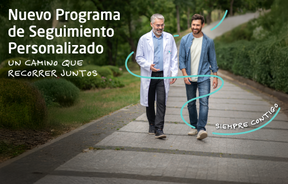

 Centro Médico Teknonen/health-centers/centro-medico-teknon
Centro Médico Teknonen/health-centers/centro-medico-teknon- Centro Médico Teknonen/health-centers/centro-medico-teknonHospital Universitari General de Catalunyaen/health-centers/hospital-universitari-general-catalunya
 Centro Médico Teknonen/health-centers/centro-medico-teknonHospital Universitari Sagrat Coren/health-centers/hospital-universitari-sagrat-cor
Centro Médico Teknonen/health-centers/centro-medico-teknonHospital Universitari Sagrat Coren/health-centers/hospital-universitari-sagrat-cor
Dupuytren's disease, also known as Dupuytren's contracture, is a chronic connective tissue condition that causes progressive and permanent contraction of the fingers, usually the fourth and fifth, due to the formation of scar tissue in the palm of the hand.
Epidemiology:
Dupuytren's disease is more common in people of European descent, especially in Nordic countries and those of Celtic ancestry. It most commonly affects men over the age of 50, although women may also be affected. It has been observed that Dupuytren's disease is more common in people with a family history of the disease and in those with chronic diseases such as diabetes mellitus and alcoholism.
Etiopathogenesis:
The exact cause of Dupuytren's disease is not known with certainty, although it is believed that it may be related to genetic and environmental factors. Several risk factors have been identified, such as age, male sex, family history of the disease, diabetes mellitus, alcohol consumption, smoking and the use of certain medications.
Symptoms:
Dupuytren's disease is characterized by a progressive and permanent contraction of the fingers, usually the fourth and fifth, due to the formation of scar tissue in the palm of the hand. Symptoms usually begin with the appearance of small lumps or nodules in the palm of the hand, which may be painful or tender to the touch. Over time, these nodules may form cords or bands of tissue that extend into the fingers, causing progressive contraction of the fingers. In severe cases, Dupuytren's disease can limit the ability to perform everyday activities, such as grasping objects or writing.
Diagnosis:
Diagnosis of Dupuytren's disease is based on symptoms and physical examination of the hand by the physician. In some cases, additional tests, such as an X-ray or MRI, may be performed to assess the extent of the disease.
Treatment:
Treatment of Dupuytren's disease depends on the severity of the condition. In mild cases, conservative measures such as physical or occupational therapy may be recommended to improve hand mobility. In more severe cases, surgery may be recommended to remove scar tissue and free the affected fingers. In recent years, a non-surgical treatment has been developed, which involves the injection of enzymes to dissolve the scar tissue. This treatment is known as collagenase injection and may be an alternative to surgery in some cases.



































